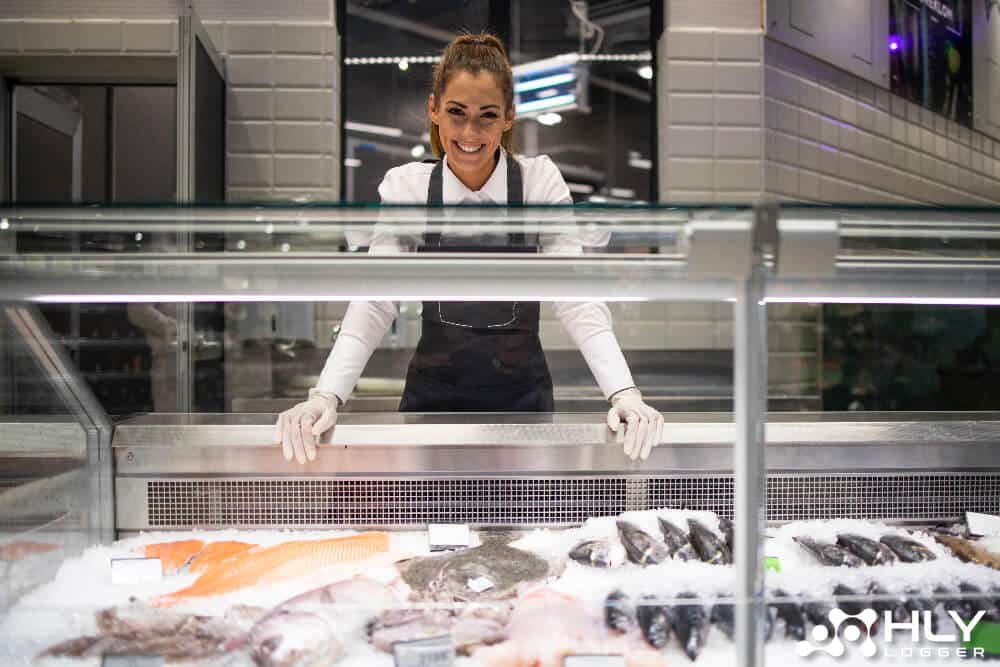The frozen food industry has become one of the sectors with rapid growth. This is due to the modern lifestyle that demands convenience and practicality. However, this industry’s main challenge is maintaining product quality throughout the supply chain—from production to reaching consumers. Is it true that supply chain technology can be an innovative solution for enhancing efficiency, transparency, and visibility at every stage of the frozen food logistics process?
Contents
Understanding Supply Chain Technology
Supply chain technology involves applying digital technology, automation, and analytics to manage and optimize the supply chain. In the context of frozen food, this technology plays a crucial role in monitoring and controlling product temperature. It also includes managing real-time shipments and increasing collaboration between partners in the supply chain. Companies can ensure that frozen food products remain safe and high-quality until they reach end consumers. Frozen food is highly susceptible to temperature fluctuations. The main challenges in its supply chain include strict temperature monitoring because extreme outside temperatures can cause damage to the product.
Another significant challenge is limited visibility. The lack of transparency in the supply chain can lead to mismatches in handling. Suboptimal management under non-ideal conditions can lead to increased operational costs.
Supply Chain Technology Innovation in the Frozen Food Industry
Various technological innovations have been developed as alternative solutions in the frozen food supply chain using IoT devices. These devices allow real-time monitoring of temperature and humidity during transportation and storage. Smart sensors are used in containers or vehicles to send data to storage systems, enabling companies to monitor product conditions anytime and anywhere.
HLY Technology provides IoT-based data loggers, such as the M371 3G Real-Time Disposable Temperature Data Logger or the M502-TH USB Reusable Logger, which support precise monitoring. Additionally, IoT sensors on delivery trucks monitor temperature and provide warnings if the temperature approaches a critical threshold. Another device that supports innovation in the supply chain is the M502-TH USB Reusable Temperature and Humidity Logger, which monitors temperature and humidity in the food storage and delivery process.
Visibility and transparency are also crucial in the supply chain. This visibility involves recording every step of the product’s journey safely and without modification. The technology aims to ensure that all parties in the supply chain comply with standards and maintain data integrity. Blockchain can be used to trace the origin of frozen food products, ensure compliance with food safety regulations, and provide transparency to consumers about the product’s journey.
The use of technology will collect large amounts of data, which can be analyzed using machine learning and artificial intelligence to optimize the supply chain. An integrated supply chain and proper data processing can provide valuable decision-making insights. This technology helps increase efficiency by identifying patterns and providing recommendations for optimization. Companies can make more accurate demand forecasts to prevent excess or stock shortages. In addition, companies can also optimize shipping routes to save costs and time.
The existence of a Transportation Management System can support the integration of supply chain technology implementation by using software to plan, implement, and manage shipping. In the frozen food industry, this management system should have features for real-time monitoring. This feature can help companies track product locations and ensure delivery on schedule. Integrating Automated Guided Vehicles (AGVs) into frozen food warehouses can support continuous operations by moving products quickly and efficiently, thereby reducing the risk of damage.
Benefits of Implementing Supply Chain Technology

The implementation of supply chain technology provides many benefits, including maintaining product quality. Technologies like IoT and blockchain ensure that frozen foods are stored and shipped at the right temperature to preserve quality. Using better demand prediction systems and optimal stock management allows companies to reduce product damage and waste. Automation and optimization of logistics processes help companies reduce labor and transportation costs. Enhanced visibility support can make consumers more confident that the products they buy have been well maintained and handled throughout the supply chain.
Many companies have implemented supply chain technology to optimize their operations within the industry. Frozen food companies have successfully utilized supply chains to improve their operations and business processes. Companies use IoT to monitor the temperature and location of products distributed worldwide to ensure safety and freshness. Some companies implement blockchain for transparency, providing consumers with information about the source of raw materials, while others use AI technology to predict demand and optimize the production and distribution of frozen products.
Challenges
Implementing supply chain technology can be challenging. Some of the challenges that may be faced include high initial costs. Investing in hardware and software to implement technology requires significant funds. Another challenge is integrating new technology with existing systems, which can be complex. Additionally, supporting employees skilled in operating new technology and devices requires training.
Conclusion
Supply chain technology has significantly transformed the frozen food industry, offering solutions to complex challenges related to quality, visibility, and efficiency. With technologies such as IoT, blockchain, and AI, companies can ensure that frozen foods are delivered to the highest standards, meeting the needs of modern consumers. Technology adoption will become ever more important as the demand for high-quality, convenient frozen foods continues to grow. Companies that adopt technology early will gain a competitive advantage. Conversely, companies that are slow to respond and adapt to technological developments risk being left behind by the competition.

